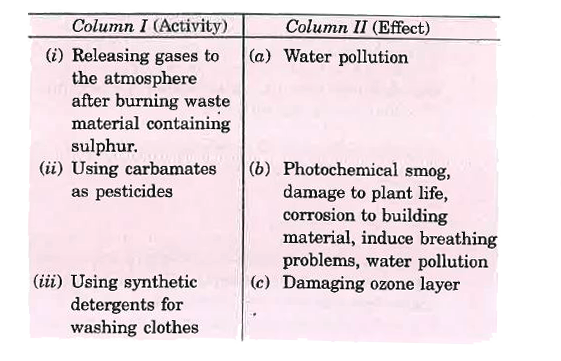Match the polymers given in column I with the type of linkage present in them given in column II
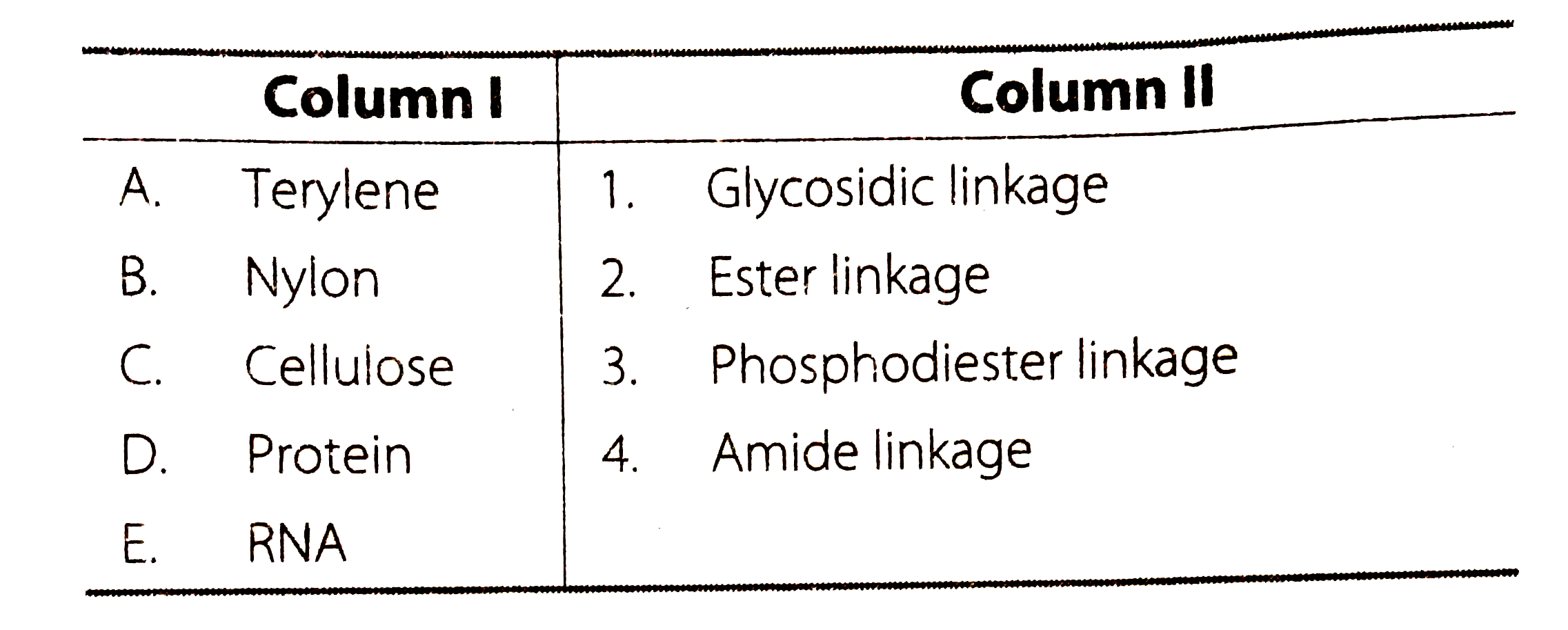
Video Solution
Text Solution
A→(2),B→(4),C→(1),D→(4),E→(3)
Column I represents name of polymer and column II represents types of linkage.Hence correct matching can be done as
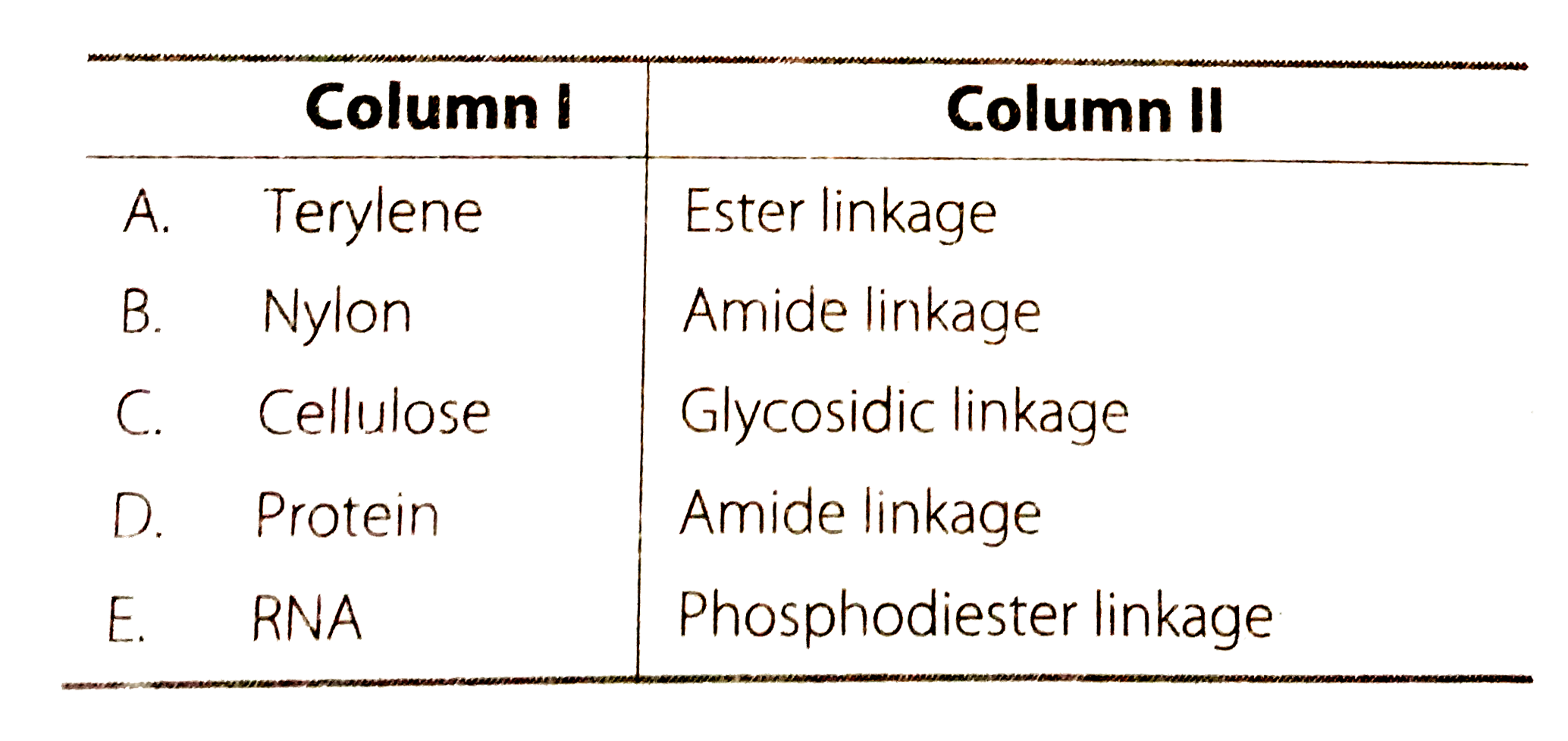
|
Updated on:21/07/2023
Topper's Solved these Questions
Similar Questions
Knowledge Check
- Question 1 - Select One
Observe the table given below and match the reaction given in column I with the type of reaction given in column II.
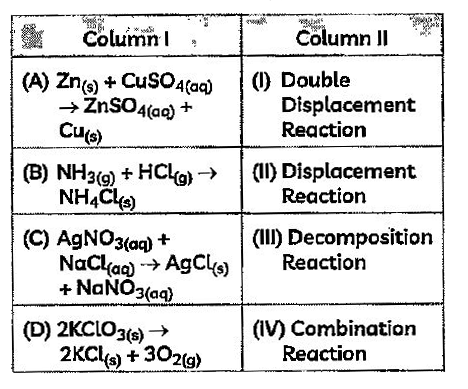 A(A)-(I), (B) - (IV), (C) - (II),(D)-(III)B(A)- (I), (B) - (IV), (C) - (III), (D) - (II)C(A)- (II), (B) - (IV): (C) - (III), (D) - (I)D(A)- (I), (B) - (IV), (C) - (I), (D) - (III)
A(A)-(I), (B) - (IV), (C) - (II),(D)-(III)B(A)- (I), (B) - (IV), (C) - (III), (D) - (II)C(A)- (II), (B) - (IV): (C) - (III), (D) - (I)D(A)- (I), (B) - (IV), (C) - (I), (D) - (III) - Question 2 - Select One
Match the polymer (column I) with its type (column II)
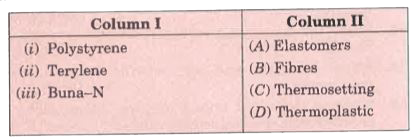 A(i)−(D),(ii)−(A),(iii)−(B)B(i)−(A),(ii)−(D),(iii)−(C)C(i)−(D),(ii)−(B),(iii)−(A)D(i)−(D),(ii)−(A),(iii)−(C)
A(i)−(D),(ii)−(A),(iii)−(B)B(i)−(A),(ii)−(D),(iii)−(C)C(i)−(D),(ii)−(B),(iii)−(A)D(i)−(D),(ii)−(A),(iii)−(C) - Question 3 - Select One or More
Match the compounds given In column I with oxidation state of cabalt present in it (given in column II) and assign the correct code.
 AABCD1243BABCD4321CABCD3142DABCD4132
AABCD1243BABCD4321CABCD3142DABCD4132
Match the activity given in Column I with the type of pollution created by it given in Column II.
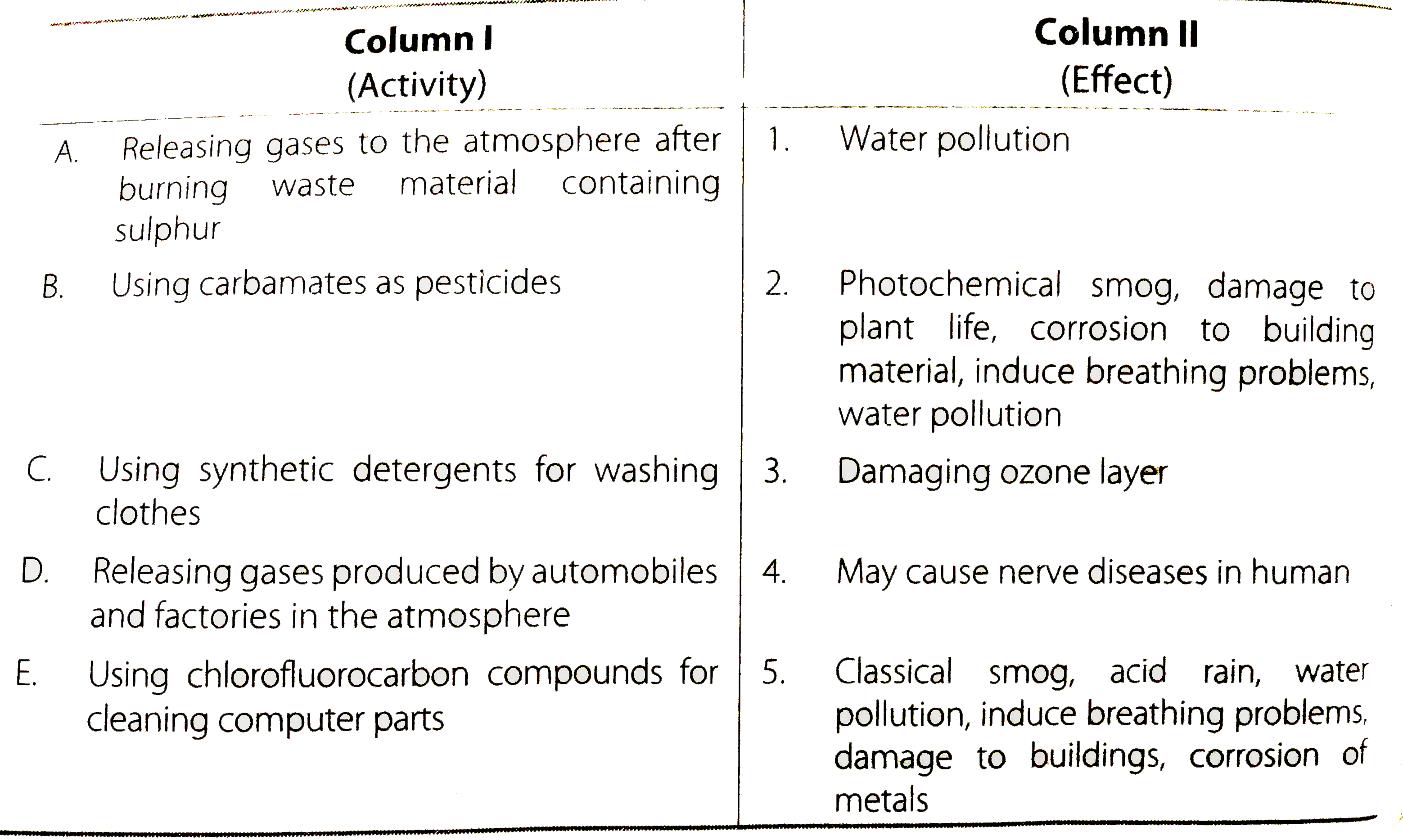 View Solution
View SolutionMatch the polymers given in column I with their repeating units given in column II
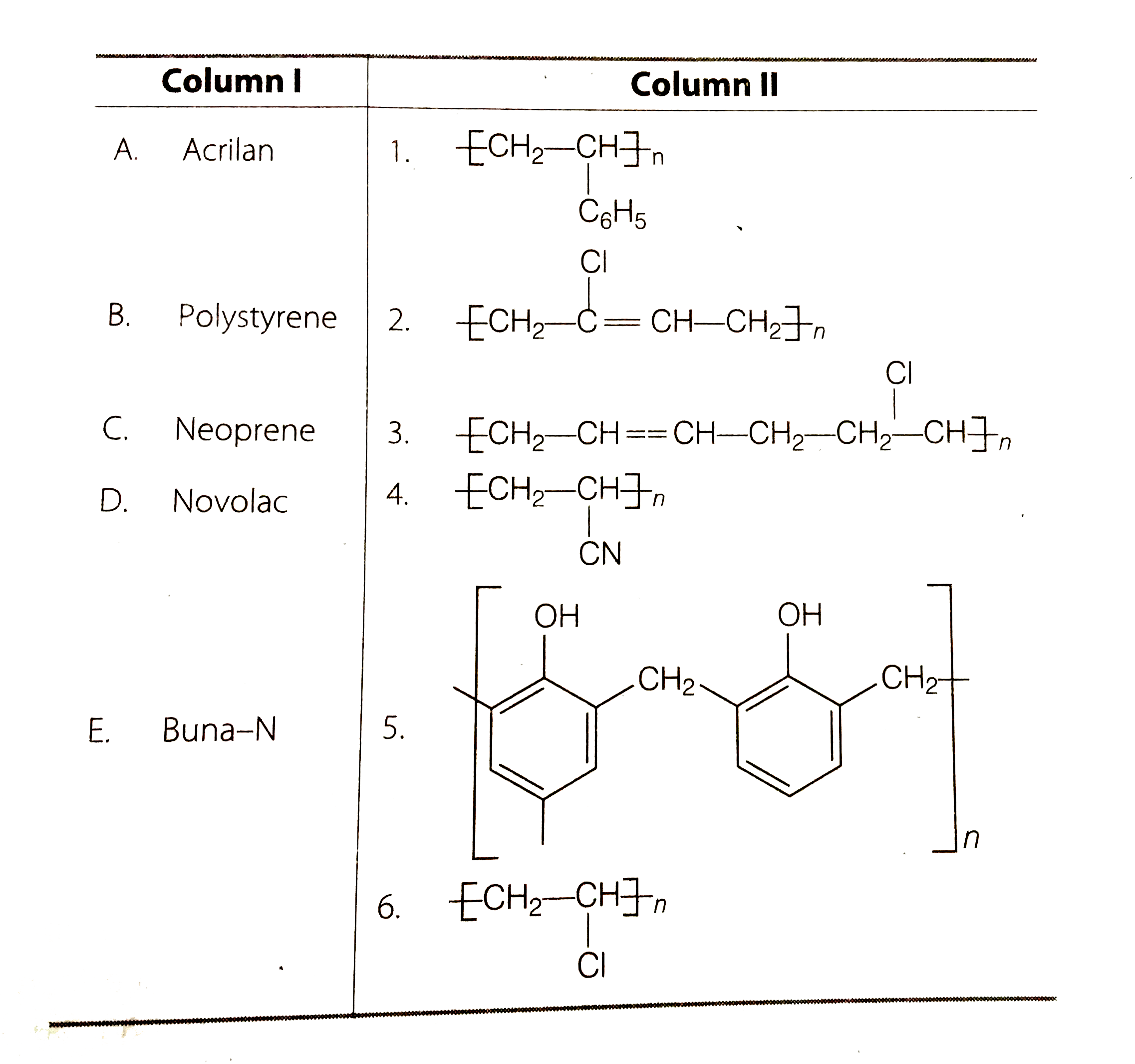 View Solution
View SolutionMatch the example given in Column I with the type of colloid given in Column II.
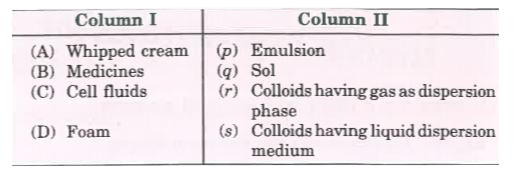 View Solution
View SolutionMatch the reactions given in column I with the types of reactions given in column II.
 .View Solution
.View SolutionMatch the anionic species given in column I that are present in the ore(s) given in column II.
 View Solution
View Solution


